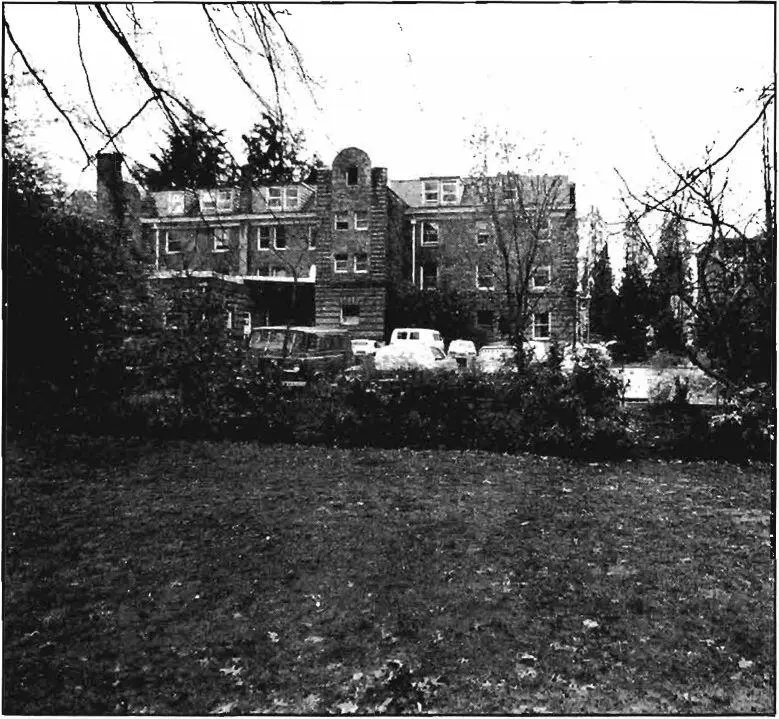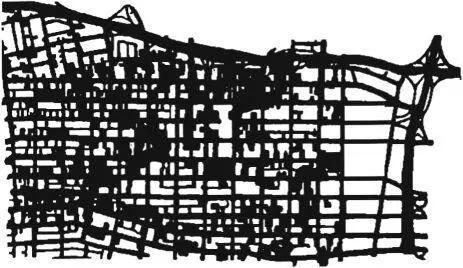Christopher alexander - A pattern language
Здесь есть возможность читать онлайн «Christopher alexander - A pattern language» весь текст электронной книги совершенно бесплатно (целиком полную версию без сокращений). В некоторых случаях можно слушать аудио, скачать через торрент в формате fb2 и присутствует краткое содержание. Жанр: Прочая научная литература, на английском языке. Описание произведения, (предисловие) а так же отзывы посетителей доступны на портале библиотеки ЛибКат.
- Название:A pattern language
- Автор:
- Жанр:
- Год:неизвестен
- ISBN:нет данных
- Рейтинг книги:3 / 5. Голосов: 1
-
Избранное:Добавить в избранное
- Отзывы:
-
Ваша оценка:
- 60
- 1
- 2
- 3
- 4
- 5
A pattern language: краткое содержание, описание и аннотация
Предлагаем к чтению аннотацию, описание, краткое содержание или предисловие (зависит от того, что написал сам автор книги «A pattern language»). Если вы не нашли необходимую информацию о книге — напишите в комментариях, мы постараемся отыскать её.
A pattern language — читать онлайн бесплатно полную книгу (весь текст) целиком
Ниже представлен текст книги, разбитый по страницам. Система сохранения места последней прочитанной страницы, позволяет с удобством читать онлайн бесплатно книгу «A pattern language», без необходимости каждый раз заново искать на чём Вы остановились. Поставьте закладку, и сможете в любой момент перейти на страницу, на которой закончили чтение.
Интервал:
Закладка:
Finally, we give the children of Glasgow the last word.
To fling a “piece,” a slice of bread and jam, from a window down to a child in the street below has been a recognised custom in Glasgow’s tenement housing. . . .
THE JEELY PIECE SONGby Adam McNaughton
Pm a skyscraper wean, I live on the nineteenth flair,
On’ Pm no’ gaun oot tae play ony mair,
For since we moved tae oor new hoose Pm wastin’ away,
’Cos Pm gettin’ wan less meal ev’ry day,
Refrain
Oh) ye canny fling- pieces oot a twenty-storey flat,
Seven hundred hungry weans will testify tae that,
If it’s butter, cheese or jeely, if the breid is plain or pan, The odds against it reachin’ us is ninety-nine tae wan.
We’ve wrote away tae Oxfam tae try an’ get some aid,
We’ve a’ joined thegither an’ formed a “piece” brigade,
We’re gonny march tae London tae demand oor Civil Rights,
Like “Nae mair hooses ower piece flingin’ heights.”
Therefore:
In any urban area, no matter how dense, keep the majority of buildings four stories high or less. It is possible that certain buildings should exceed this limit, but they should never be buildings for human habitation.

Within the framework of the four-story limit the exact height of individual buildings, according to the area of floor they need, the area of the site, and the height of surrounding buildings, is given by the pattern number of stories (96). More global variations of density are given by density rings (29). The horizontal subdivision of large buildings into smaller units, and separate smaller buildings, is given by building complex (95). housing hill (39) and office connections (82) help to shape multi-storied apartments and offices within the constraints of a four-story limit. And finally, don’t take the four-story limit too literally. Occasional exceptions from the general rule are very important-HIGH PLACES (62). . . .
119
22 NINE PER CENT PARKING**

I 20
. . . the integrity of local transport areas and the tranquility of local communities and neighborhoods depend very much on the amount of parking they provide. The more parking they provide, the less possible it will be to maintain these patterns, because the parking spaces will attract cars, which in turn violate the local transport areas and neighborhoods—local transport areas ( I I), COMMUNITY OF 7OOO (l2)> IDENTIFIABLE NEIGHBORHOOD (14). This pattern proposes radical limits on the distribution of parking spaces, to protect communities.
4. 4. 4.
Very simply—when the area devoted to parking is too great, it destroys the land.

In downtown Los Angeles over 60 fer cent of the land is given over to the automobile.
Very rough empirical observations lead us to believe that it is not possible to make an environment fit for human use when more than 9 per cent of it is given to parking.
Our observations are very tentative. We have yet to perform systematic studies—our observations rely on our own subjective estimates of cases where “there are too many cars” and cases where “the cars are all right.” However, we have found in our preliminary observations, that different people agree to a remarkable extent about these estimates. This suggests that we are dealing with a phenomenon which, though obscure, is nonetheless substantial.
An example of an environment which has the threshold density of 9 per cent parking, is shown in our key photograph: a quadrant
I 21
of the University of Oregon. Many people we have talked to feel intuitively that this area is beautiful now, but that if more cars were parked there it would be ruined.
What possible functional basis is there for this intuition? We conjecture as follows: people realize, subconsciously, that the physical environment is the medium for their social intercourse. It is the environment which, when it is working properly, creates the potential for all social communion, including even communion with the self.
We suspect that when the density of cars passes a certain limit, and people experience the feeling that there are too many cars, what is really happening is that subconsciously they feel that the cars are overwhelming the environment, that the environment is no longer “theirs,” that they have no right to be there, that it is not a place for people, and so on. After all, the effect of the cars reaches far beyond the mere presence of the cars themselves. They create a maze of driveways, garage doors, asphalt and concrete surfaces, and building elements which people cannot use. When the density goes beyond the limit, we suspect that people feel the social potential of the environment has disappeared. Instead of inviting them out, the environment starts giving them the message that the outdoors is not meant for them, that they should stay indoors, that they should stay in their own buildings, that social communion is no longer permitted or encouraged.
We have not yet tested this suspicion. Hoivever yif it turns out to be true , it may be that this pattern, which seems to be based on such slender evidence , is in fact one of the most crucial patterns there is, and that it -plays a key role in determining the difference between environments which are socially and psychologically healthy and those which are unhealthy.
We conjecture, then, that environments which are human, and not destroyed socially or ecologically by the presence of parked cars, have less than 9 per cent of the ground area devoted to parking space; and that parking lots and garages must therefore never be allowed to cover more than 9 per cent of the land.
It is essential to interpret this pattern in the strictest possible way. The pattern becomes meaningless if we allow ourselves to place the parking generated by a piece of land A, on another adjacent piece of land B, thus keeping parking on A below 9 per
1 22
22 NINE PER CENT PARKING
cent, but raising the parking on B to more than 9 per cent. In other words, each piece of land must take care of itself; we must not allow ourselves to solve this problem on one piece of land at the expense of some other piece of land. A town or a community can only implement the pattern according to this strict interpretation by defining a grid of independent “parking zones”—each zone I to 10 acres in area—which cover the whole community, and then insisting that the rule be applied, independently, and strictly, inside every parking zone.
The 9 per cent rule has a clear and immediate implication for the balance between surface parking and parking in garages, at different parking densities. This follows from simple arithmetic. Suppose, for example, that an area requires 20 parking spaces per acre. Twenty parking spaces will consume about 7000 square feet, which would be 17 per cent of the land if it were all in surface parking. To keep 20 cars per acre in line with the 9 per cent rule, at least half of them will have to be parked in garages. The table below gives similar figures for different densities:
Читать дальшеИнтервал:
Закладка:
Похожие книги на «A pattern language»
Представляем Вашему вниманию похожие книги на «A pattern language» списком для выбора. Мы отобрали схожую по названию и смыслу литературу в надежде предоставить читателям больше вариантов отыскать новые, интересные, ещё непрочитанные произведения.
Обсуждение, отзывы о книге «A pattern language» и просто собственные мнения читателей. Оставьте ваши комментарии, напишите, что Вы думаете о произведении, его смысле или главных героях. Укажите что конкретно понравилось, а что нет, и почему Вы так считаете.












